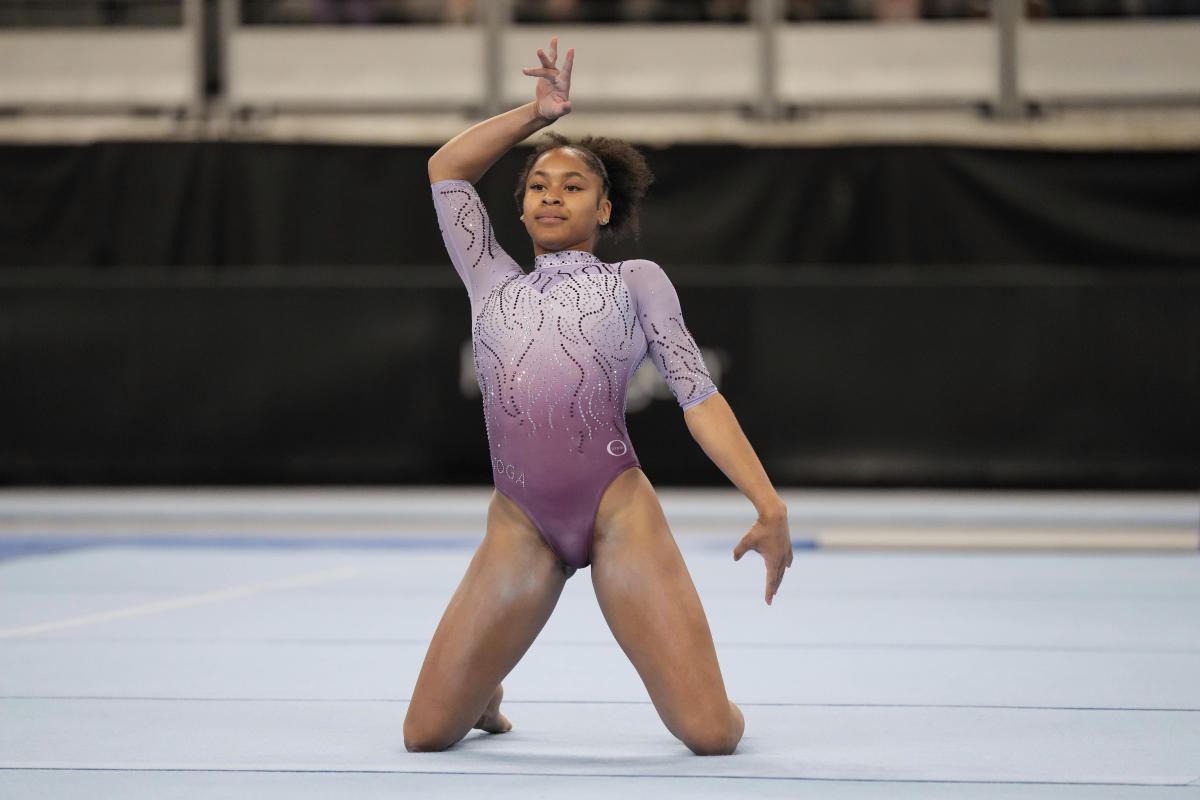Gymnastics Olympic Trials Injuries: Gymnastics Olympic Trials Injury

Gymnastics olympic trials injury – The road to the Olympic Games is paved with intense training and rigorous competition, making gymnasts particularly susceptible to injuries. During the Olympic trials, athletes push their bodies to the limit, often resulting in a range of injuries.
Types of Injuries, Gymnastics olympic trials injury
The most common types of injuries sustained during gymnastics Olympic trials include:
- Muscle strains and tears: Overexertion and repetitive movements can lead to muscle strains or tears, particularly in the legs, back, and shoulders.
- Ligament sprains: Sprains occur when ligaments, the tissues that connect bones, are stretched or torn, often in the ankles, knees, and wrists.
- Tendonitis: Repetitive strain on tendons, the tissues that connect muscles to bones, can cause inflammation and pain, commonly in the elbows, knees, and wrists.
- Fractures: High-impact landings and falls can result in fractures, especially in the wrists, ankles, and legs.
Causes of Injuries
Several factors contribute to the high incidence of injuries during gymnastics Olympic trials, including:
- Training intensity: The rigorous training regimen required for Olympic-level gymnastics involves extensive repetition and high-impact exercises, increasing the risk of injuries.
- Technique flaws: Improper technique can put undue stress on joints and muscles, leading to injuries.
- Equipment issues: Faulty or poorly maintained equipment, such as uneven bars or mats, can increase the risk of falls and other injuries.
Impact of Injuries on Gymnasts’ Performance
Injuries are an unfortunate but common part of gymnastics. They can range from minor sprains and strains to major fractures and dislocations. Any injury, regardless of its severity, can have a significant impact on a gymnast’s performance.
Physical injuries can affect a gymnast’s strength, flexibility, and coordination. This can make it difficult for them to perform skills safely and effectively. Even a minor injury can disrupt a gymnast’s training schedule and hinder their progress. More serious injuries can require surgery and rehabilitation, which can sideline a gymnast for months or even years.
Injuries can also have a negative impact on a gymnast’s mental well-being. They can cause pain, frustration, and anxiety. Gymnasts who are injured may feel like they are letting their team or themselves down. They may also worry about their future in the sport.
In some cases, injuries can even lead to depression or eating disorders. It is important for gymnasts to have a strong support system in place to help them cope with the challenges of injuries. This includes coaches, family members, and friends who can provide emotional support and encouragement.
Impact on Training Schedules
Injuries can disrupt a gymnast’s training schedule in a number of ways. A minor injury may only require a few days of rest, while a more serious injury may require weeks or months of rehabilitation. During this time, the gymnast will be unable to train at their usual level. This can lead to a loss of strength, flexibility, and coordination.
In some cases, an injury may force a gymnast to miss important competitions. This can be a devastating blow, especially for gymnasts who are competing for a spot on the Olympic team.
Impact on Performance
Injuries can also have a significant impact on a gymnast’s performance. A gymnast who is injured may not be able to perform skills as safely or effectively as they could before the injury. This can lead to falls, mistakes, and lower scores.
In some cases, an injury may even prevent a gymnast from competing altogether. This can be a very frustrating and disappointing experience for the gymnast.
Impact on Overall Health
Injuries can also have a negative impact on a gymnast’s overall health. Some injuries can lead to chronic pain or disability. Others can increase the risk of future injuries.
It is important for gymnasts to take care of their bodies and to get regular medical checkups. This can help to prevent injuries and to ensure that any injuries that do occur are treated promptly and effectively.
